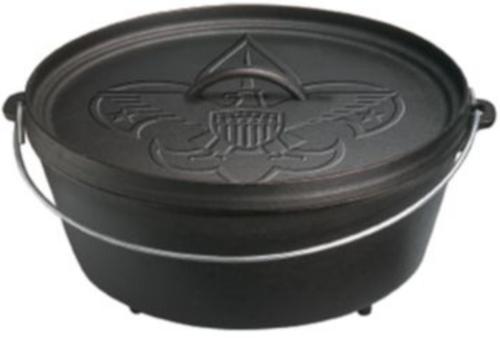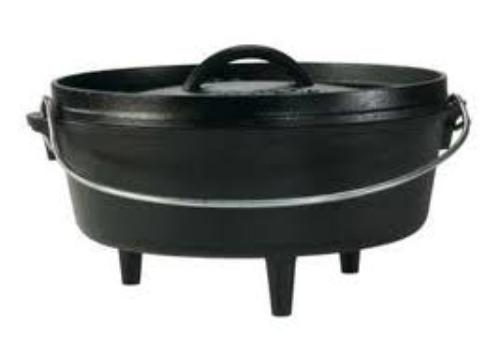

When buying a cast iron Dutch oven, whether new or used, look carefully at these five important areas:
1. Only buy Dutch ovens with legs. Some are manufactured with flat bottoms and are far more difficult to use. The three legs should be cleanly attached to the bottom of the oven, never cracked, bent, or broken off.
2. Check the fit of the lid. It should lie flush with the lip of the oven all the way around, with no significant gaps.
3. Check the casting, or thickness, of the metal, especially around the rim. There will be some inconsistencies. However, areas that are 15% (or more) thicker or thinner than the remaining areas will produce hot or cold spots during cooking and cooling. This variance in thickness will also make the oven much more likely to crack or warp.
4. Make sure the lid has a loop handle, cleanly attached to its center.
5. Check the wire handle that attaches to the oven itself. It should be easily movable and strong enough to use for carrying or hanging a heavy pot full of stew without difficulty.
If these five areas pass inspection, you’ve got a good Dutch oven.
Another purchase consideration is the size of the oven. Dutch ovens range in size from 8 to 22 inches in diameter. The most commonly used are 10-inch, 12-inch, and 14-inch ovens. The larger ovens hold more if you’re cooking for large groups, but they are huge, heavy, and hard to handle. If you only buy one oven to get started, pick a 12-inch. Later you can add a 10-, 14- or additional 12-inch ovens.